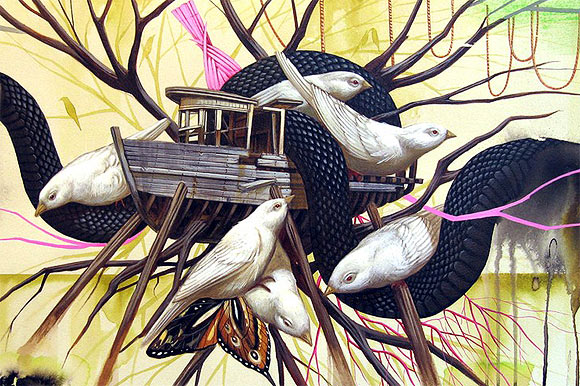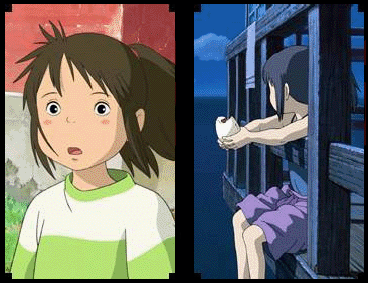- The Experts
- From Novice to Expert
When evaluating my own work in relation to these experience presets, I looked at each of the criteria and in turn realted them to my own work (shown right). I would have to conclude that my experience and skill level varies greatly when considering terms as simple as illustrative style. Therefore, I have chosen to critically observe my manga-style artworks and knowledge, which I have been practicing since an early age originally due to media influence and an interest in the visuals of Japanese animation.
I could say I consider myself between competent and proficient in this area as opposed to being a novice through to beginner. This is due to several factors. I have a high understanding of the origins and continuing culture of the subject area, as well as the visual techniques employed to create the most effective images; composition/signs/colour/tone/subject/visual heirachy etc. Over nearly 10 years my manga-influenced works have become more consistenltly visually and personally rewarding, backed up by a relatively high internet following and continued positive reactions. No assistance in creation is required and I am able to deal with problematic aspects of an image by either restating or reworking. When creating an image, I view the wider 'picture' by taking into account my online audience, the broader outlay of a character's world and the way in which they are visually presented.
 Looking at the expert graphic designers observed in this particular ITAP lecture, the typographical work of Neville Brody stands out due to both it's familiarity and effective use of visual variation within the given framescale. His layout for the new compact version of The Times are proving a huge factor in the iconic nature of the paper, recognized nationally and even globally. His choice of composition, font and aspect sizing all donate to it's reputation as a more distinguished chronicle than most competition, with headlines avoiding feeling somewhat sensational and loaded through their modest size and relatively slim typeface. Text is neatly divided into seperate stories, yet pages are full and still boldly illustrated, whether this be photographically or graphically. Brody's work is an excellent reflection of how the intent of a piece can be demonstrated; visuals affect audience broadity, the literal information contained within, in which order we view it, and even the expected price. If published material appears to have alot of content from the way in which it is presented, the economical value can become greater. Although we may not realise when picking up a broadsheet or indeed mini-version, image choices themselves can affect and define opinion making his work very powerful.
Looking at the expert graphic designers observed in this particular ITAP lecture, the typographical work of Neville Brody stands out due to both it's familiarity and effective use of visual variation within the given framescale. His layout for the new compact version of The Times are proving a huge factor in the iconic nature of the paper, recognized nationally and even globally. His choice of composition, font and aspect sizing all donate to it's reputation as a more distinguished chronicle than most competition, with headlines avoiding feeling somewhat sensational and loaded through their modest size and relatively slim typeface. Text is neatly divided into seperate stories, yet pages are full and still boldly illustrated, whether this be photographically or graphically. Brody's work is an excellent reflection of how the intent of a piece can be demonstrated; visuals affect audience broadity, the literal information contained within, in which order we view it, and even the expected price. If published material appears to have alot of content from the way in which it is presented, the economical value can become greater. Although we may not realise when picking up a broadsheet or indeed mini-version, image choices themselves can affect and define opinion making his work very powerful. Another principle previously discussed in these blog posts is that of visual heirachy. In this case, and in the wider case of composing text for publishing, this is heavily utilized by the designer. Although all aspects of the cover are somewhat in competition, the layout of these are meticulously placed to define what we as an audience will view first - as aforementioned, a huge part of the power of media. Subconciously or not, we take notice of what corporations want the public to absorb. Selective placing for full power of intent.




















